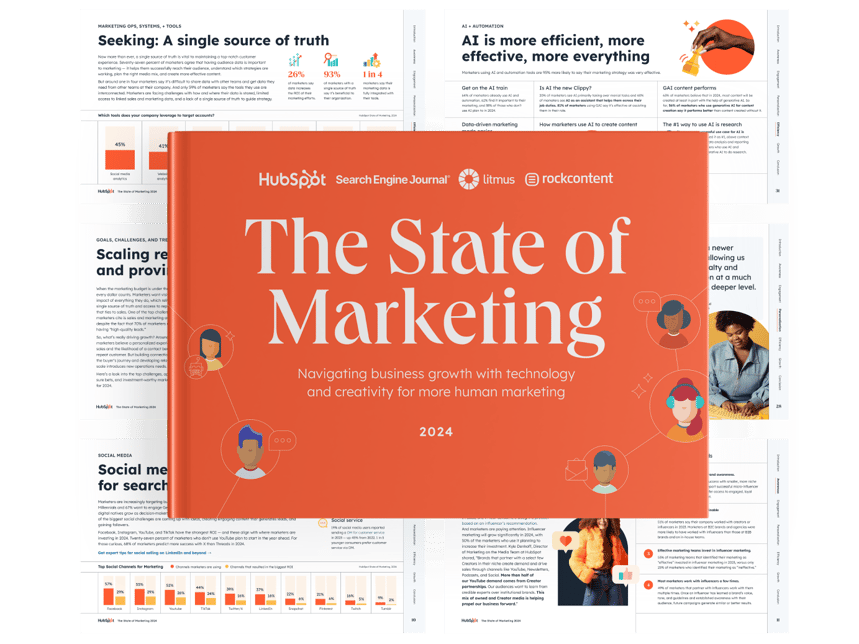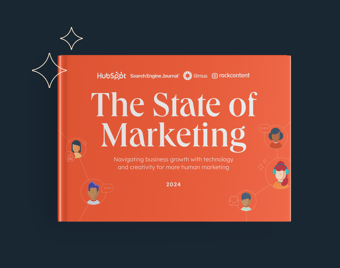2024
The State of Marketing Report

2024 is here. Is your team ready?
The marketing playbook is always changing, but we've been paying attention to what's working and what's not. We'll cover the marketing trends and tactics to build into your 2024 marketing strategy.
The future of B2B marketing lies in the hands of those who can seamlessly blend human creativity with the transformative capabilities of AI.
Awareness
New Uses for Social Media and Expert Content
Top Social Media Channels for Marketing
Leaning into your unique knowledge allows you to curate experiences that address what users don't know they don't know — content that surprises, delights, and provides new insights.
Engagement
Marketing Strategies That Help Companies Connect
-
94%
of marketers say personalization boosts sales.
-
77%
of marketers report that GAI helps create more personalized content.
-
25%
of marketers plan to try first-party data collection.
Privacy
Consumers Love Personalization, but Also Want Privacy
Is your company working on a plan to approach cookie-free targeting?
In 2024, personalization is more important than ever. With your first-party data in tow, marketing teams should turn to the inbox to experiment with hyper-personalization.
Efficiency
There's No Time to Waste time
How marketers use AI to create content
Growth
Get Sales and Marketing Aligned — Trust Us
-
2.5
hours marketers save per day with AI.
-
72%
of marketers use AI for personalization.
-
60%
of marketers see AI tools as a helpful assistant in their jobs.
The State of Marketing 2024
Learn how today's biggest marketing trends are impacting how marketers do their jobs, from changing privacy regulations to the rise of AI tools.

About Our Partners

.png?width=400&height=150&name=SEJ%20logo%20400%20x%20150%20(1).png)

HubSpot uses the information you provide to us to contact you about our relevant content, products, and services. HubSpot will share the information you provide to us with the following partners, who will use your information for similar purposes: Litmus, Rock Content, Search Engine Journal. You can unsubscribe from communications from HubSpot at any time. For more information, check out HubSpot's Privacy Policy. To unsubscribe from Litmus's communications, see Litmus's Privacy Policy. To unsubscribe from Rock Content's communications, see Rock Content's Privacy Policy. To unsubscribe from Search Engine Journal's communications, see Search Engine Journal's Privacy Policy.
Download Now
All fields are required.